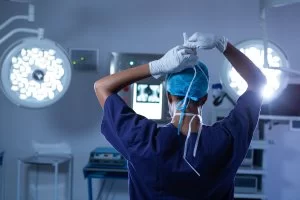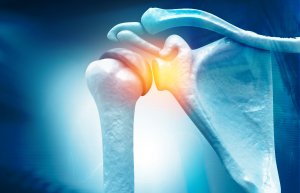Why safety improvements for the placement of nasogastric tubes are vital
7 Feb 2020 | Nicholas Leahy
Table of Contents
This month, the Healthcare Safety Investigation Branch launched an investigation looking at the implementation of safety improvements for the placement of nasogastric tubes (NGTs).
What are nasogastric tubes?
NGTs are passed through the nose of the patient and then down the back of the throat, through the oesophagus to the stomach. They are used to give medication, food and drink to patients who are critically ill or unconscious, have suffered a neurological condition such as a stroke and so cannot swallow, or to patients whose conditions mean that they cannot take in enough food or drink by mouth to meet their nutritional needs. The placement of an NGT needs to be carried out by a medical professional who has had training in how to do so, and who is competent in assessing whether the tube has been correctly placed.
Serious consequences of misplacement of nasogastric tubes
The investigation has come about after the HSIB was notified of an incident in which a patient had an NGT inadvertently inserted into his lung. Whilst the misplacement of these tubes by medical staff is thankfully a relatively rare event, the consequences of doing so can be catastrophic and even fatal. So it is important that where improvements to safety can be made, these are identified and implemented.
Whilst in the above case, the patient thankfully recovered after a period of treatment, I have recently been instructed in a case whereby the negligent placement of an NGT and the failure to identify that it had been misplaced led to the death of the patient. The NHS Trust commenced an investigation in question, which identified several improvements that could be made to prevent such an incident from happening again.
In the case I referred to above, the NGT was placed into my client’s mother’s lung and there was a failure by the nursing team thereafter to identify this until she began to deteriorate. Feeding was commenced via the misplaced NGT and my client’s mother suffered a pneumothorax and aspiration pneumonia from which she was unable to recover. The report into her death identified a number of safety issues which contributed to this incident, including:
- Nursing staff not following the NGT protocol for the testing of NGT positions due to a deficit in their education and training and confusion regarding the protocol;
- The Trust’s NGT protocol was not sufficiently clear as to when chest X-rays should be used to confirm NGT placement in patients with a low level of consciousness and who have recently been vomiting;
- A delay in the escalation of the patient’s deterioration and a delay by the medical team due to a breakdown in communication; and
- Repositioning of the NGT after its partial removal by the patient and a delay in recognising that the NGT had been misplaced, such that feeding was commenced before this was noticed.
Lessons can be learned from the errors made in this case, which unfortunately have also occurred in other cases. It is important that medical staff who are frequently asked to place NGTs have access to teaching sessions regarding NGT placement and management and that such sessions are repeated regularly enough so that staff are up to date with best practices.
Further, NGT policies in hospitals need to be clear and consistent. Policies should contain clear guidelines on PH testing (which is used to confirm correct placement), tube measurement, tube position monitoring and adherence to protocol.
Investigation into the misplacement of NGTs
There have been attempts in recent times to mitigate the risks of misplacement of NGTs, following a number of safety alerts since 2005. However, as the case above demonstrates, there is still room for improvement. Misplacement of NGTs are classified as ‘Never Events’ within the NHS and so with improved practice, there should be hope that such events can be eradicated entirely.
The HSIB investigation aims to look at the safety risks. They have committed to taking.
“a human factors approach to understanding the processes, practices, interactions among people and other elements of system performance involved with the insertion of NGTs and confirmation of their position’.
This would appear to be a sensible approach given the issues with NGT misplacement and the safety issues identified in the case I am currently working on, and the findings of the investigation will be of great interest to clinical practitioners as well as patient safety groups and lawyers.
The HSIB’s interim bulletin can be found here:
https://www.hsib.org.uk/investigations-cases/placement-nasogastric-tubes/
Share this article
Contact
Related InsightsVIEW ALL
- 14.12.2022
Successful settlement for negligent care during kidney transplant...
Claimant v Royal Free London NHS Trust Osbornes have reached a settlement agreement on behalf of a Claimant who brought...
Read more - 28.4.2022
Calls for Public Inquiry into Vaginal Mesh Surgery
A leading professor from the University of Oxford has called for a public inquiry into the use of vaginal mesh...
Read more - 14.4.2022
Severe abdominal pain prolonged due to failed surgery
Jodi Newton was instructed in a claim against London North West University Healthcare NHS Trust where our client suffered serious...
Read more - 23.3.2022
Nerve injury following bowel surgery
Stephanie Prior was instructed in a claim against Luton & Dunstable University Hospital where our client sustained an injury to...
Read more - 25.1.2022
Serious Injury Following TVT Surgery
Case Summary Our client, SG, attended her GP in December 2015, complaining of urinary symptoms, including leaking when she laughed or...
Read more - 7.2.2020
Why safety improvements for the placement of nasogastric...
This month, the Healthcare Safety Investigation Branch launched an investigation looking at the implementation of safety improvements for the placement...
Read more - 18.7.2017
Calls for Public Inquiry into Vaginal Mesh Surgery
A leading professor from the University of Oxford has called for a public inquiry into the use of vaginal mesh...
Read more - 12.11.2014
When is Cataract Surgery Negligent?
Preventing Cataract Surgery Negligence Losing your eyesight is a life-changing experience. When preparing for surgery to save your eyesight, you...
Read more







